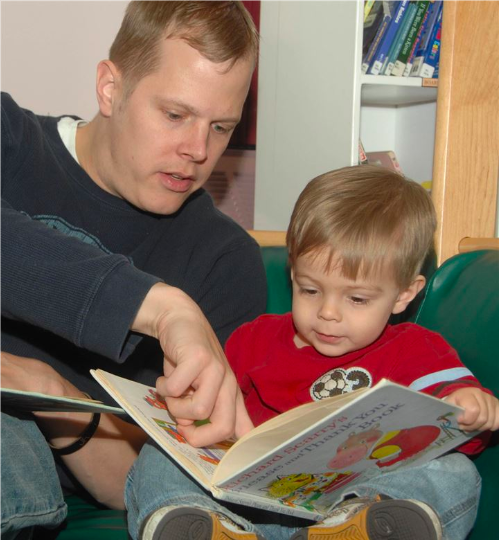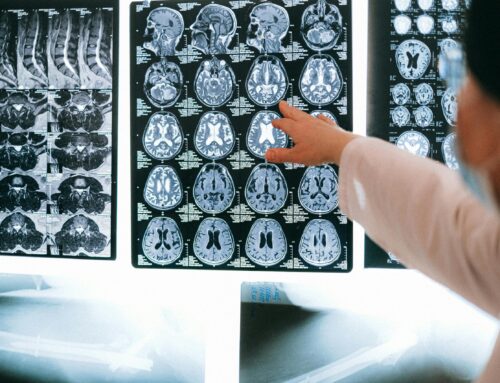Discovering that their child has a learning disability can be fear-provoking for parents. If they lack prior experience with learning disabilities, parents may feel as though they are facing uncharted territory. However, understanding the dynamics of what is happening in the mind of a child with a learning disability can help diminish fears.
What Are Learning Disabilities?
Learning disabilities are generally defined as neurologically based disorders which causes disruptions in the processing of information. These disruptions affect basic psychological functions including auditory and visual input, integration of information, memory, expressive language and motor skills.
Issues associated with processing can manifest in various ways. One child with a learning disability may have great difficulty with reading, spelling, writing, and understanding spoken words. Another child might struggle to organize, carry out instruction or understand mathematics. Even clumsiness or challenges with handwriting may be caused by a learning disability
When the effect of a learning disability is first noticed, it may be associated with the difficulty a child is experiencing. A teacher might note that a child has a reading, writing, attention, math or organization issue. However, a diagnosis will provide a specific test result to determine if the child is having an academic struggle or one of seven Specific Learning Disabilities. These seven Specific Learning Disabilities are: Auditory Processing Disorder, Dyscalculia, Dysgraphia, Dyslexia, Language Processing Disorder, Non-Verbal Learning Disabilities, and Visual Perceptual/ Visual Motor Deficit.
Auditory Processing Disorder
Auditory Processing Disorder is best explained as a “scrambling” of auditory input. It is not a hearing impairment. In fact, a child with Auditory Processing Disorder will most often pass a hearing exam. The issue is in a miscommunication between the ear and the brain causing the brain to improperly process what the ear takes in. The child is actually struggling with interpreting the spoken sounds, not the meaning of the words they hear. Often, individuals with Auditory Processing Disorder aren’t hearing the words as they are spoken. Someone might say, “How are you today?” but the child could hear, “Cow are two today?”
Dyscalculia
Dyscalculia is often described as an inability to carry out mathematical functions. While this is true, the core issue is with number retention. So not only does Dyscalculia create problems with math, it also can present struggles with time, directions and correct procedures such as “do this first, secondly do this.” Often, tasks with numbers can provoke an overwhelming feeling for a child with Dyscalculia. The struggle is with an ability to properly remember numbers correctly. The brain processes numbers incorrectly, taking the sounds of one number and associating them with a completely different number. For example, a child might retain the number three where the number was actually sixty because the “ty” in sixty sounded very similar to three.
Dysgraphia
In Dysgraphia, a child has an impairment involving written expression. The breakdown in psychological processing is in the recall and the carrying through of writing. Before writing takes place, a person retrieves information stored in their memory, which has been previously organized and reorganizing the information to meet the current situation. The memory is then relayed to the hand to perform the muscle work of putting concepts onto paper. For a child with Dysgraphia, carrying out this process becomes difficult, often creating messy handwriting and even resulting in difficulty holding a writing instrument.
Dyslexia and Language Processing Disorder
With Dyslexia, students often will find themselves struggling to read and use language. Just like other learning disorders, the problem is not related to low intelligence, but can be traced to the ways information is processed. A child with Dyslexia has difficulty looking at a letter and properly matching that letter to the sound it makes which, creates a domino effect for their language interpretation.
Language Processing Disorder is similar to Dyslexia. However, with Language Processing Disorder, the breakdown of information is in the meaning of words and sounds. A student may struggle in reading, but can also be unable to find words to express themselves or find it difficult to comprehend conversations.
Non- Verbal Learning Disabilities
Non-Verbal Learning Disabilities are a category of Specific Learning Disabilities that pertain to the interpretation of the conversation. A child diagnosed with a Non-Verbal Learning Disability might not have issues with speech or writing and may communicate fluently and consistently. Instead, the child’s social skills are affected. The neurologic functioning which allows for interpretation of social cues and tones of voice do not process correctly for a child with a Non-Verbal Learning Disability. Because social cues are a challenge, the child may struggle to maintain friendships and respond correctly to authoritative figures.
Visual Perceptual/ Visual Motor Deficit
Visual Perceptual or Visual Motor Deficit is a learning disability in which information taken in from the eyes is improperly processed by the brain. As with other learning disabilities, there seems to be a breakdown in communication between the brain and specific parts of the body. Children with Visual Perceptual/Visual Motor Deficit will struggle when it comes to activities involving hand/eye coordination. Often, this causes difficulties with tasks such as drawing, copying and even reading.
At Neurobehavioral Associates, we provide a number of assessments and parent resources for children with learning disabilities. With the right tools and information, you can understand how your child’s learning disability functions and how they can best succeed in school and otherwise.
References
Dyscalculia.org. (n.d.). Retrieved from http://www.dyscalculia.org/
Language Processing Disorder. (n.d.). Retrieved from https://ldaamerica.org/types-of-learning-disabilities/language-processing-disorder/
Language Processing Disorder. (n.d.). Retrieved from https://ldaamerica.org/types-of-learning-disabilities/language-processing-disorder/
Patino, E., & M. (n.d.). Understanding Dysgraphia. Retrieved from https://www.understood.org/en/learning-attention-issues/child-learning-disabilities/dysgraphia/understanding-dysgraphia
Team, U. (n.d.). Understanding Auditory Processing Disorder. Retrieved from https://www.understood.org/en/learning-attention-issues/child-learning-disabilities/auditory-processing-disorder/understanding-auditory-processing-disorder
Through Your Child’s Eyes. (n.d.). Retrieved from https://www.understood.org/en/tools/through-your-childs-eyes
Types of Learning Disabilities. (n.d.). Retrieved from https://ldaamerica.org/types-of-learning-disabilities/
Visual Perceptual/Visual Motor Deficit. (n.d.). Retrieved from https://ldaamerica.org/types-of-learning-disabilities/visual-perceptual-visual-motor-deficit/
What is Dyslexia? (n.d.). Retrieved from http://dyslexia.yale.edu/dyslexia/what-is-dyslexia/






